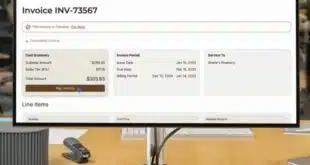A philosophical turn by the Federal Reserve Board, having to do with the definition of a “payment card network,” has already raised questions for PayPal Inc. and could have major implications for a wide range of other alternative-payment systems. “It’s a huge issue,” says Conrad Sheehan, chief executive of mPayy Inc., a Chicago-based mobile-payments startup.
How the Fed defines a network carries significance because the regulator is in the midst of working out rules that will implement the Durbin Amendment to the Dodd Frank Act. The rules, which are expected by April 21 and will apply to debit cards, will drastically chop interchange income for banks with more than $10 billion in assets and will rewrite existing network-routing and brand-exclusivity arrangements.
While most observers have construed Durbin to affect financial institutions that use Visa Inc., MasterCard Inc., and a handful of electronic funds transfer networks, the Fed may be thinking more expansively. In a set of proposals it released in December, it asks for comment on “whether other non-traditional or emerging payment systems would be covered by the statutory definition of a ‘payment card network.’” The passage then goes on to cite, as examples, mobile-payment systems and, by name, PayPal. It also asks for comment on how it might distinguish “non-traditional” systems from established networks, if the former should not be covered. “They’re feeling their way, looking for thoughts,” notes Eric Grover, principal at Carson Valley, Nev.-based Intrepid Ventures and a former Visa executive. “Their interest is genuine. Where do you draw the line?” Comments on the proposal are due Feb. 22.
The Fed’s musings on what might constitute a payment card network for purposes of its new rules—and its request for comments on the matter—are starting to provoke questions for and among alternative-payments players. At its earnings call last month, for example, PayPal officials felt obliged to tell analysts they did not believe the e-commerce processor would be covered by the debit rules, in part because it does not set interchange rates. But in its December proposal, the Fed appears to look toward whether payments systems set and enforce rules or standards for issuers and acquirers in the system as the distinguishing characteristic of a network.
And while the Fed’s proposed caps on debit interchange could have severe consequences for any system covered by the rules, its proposal for how transactions should be routed could be a plus. To implement Durbin, the Fed proposes two scenarios: that all cards carry at least two unaffiliated network brands, or that they carry at least two unaffiliated signature-debit and at least two unaffiliated PIN-debit brands.
If alternative systems were considered networks by the Fed, some observers say the new routing and non-exclusivity rules could get their brands onto more cards. This could be especially true if the alternatives can arrange to handle signature debit, adding authentication routines on top of automated clearing house settlement, for example. “The Fed has a problem [in that] there’s not much competition [in signature debit] besides MasterCard and Visa,” says Steve Mott, principal at BetterBuyDesign, a Stamford, Conn.-based consultancy. Sheehan of mPayy agrees. “It’s always been an unofficial duopoly,” he says. “The Visa and MasterCard prices are within a thousandth of a basis point of each other.”
That problem could lead the Fed to define certain networks as eligible under its new rules to be included on debit cards as signature-debit alternatives, says Mott. “There’s got to be something other than Visa or MasterCard or their affiliates or you’re not meeting the requirements,” he says.
In part, the Fed’s question of what is a payment card network is driven by the fact that the payments industry has itself never rigorously defined the term. “It’s not a clear-cut definition,” says Mott. But for the burgeoning ranks of alternative-payment systems, the answer could have seismic ramifications. Even if some of them end up winning a place on hundreds of thousands of debit cards, and even if they don’t set interchange, being defined as a network would be more a curse than a blessing if the Fed invokes a similarly expansive definition of pricing and imposes its cap, currently no higher than 12 cents per transaction in the Fed’s proposal. “That’s Armageddon,” says Mott.





